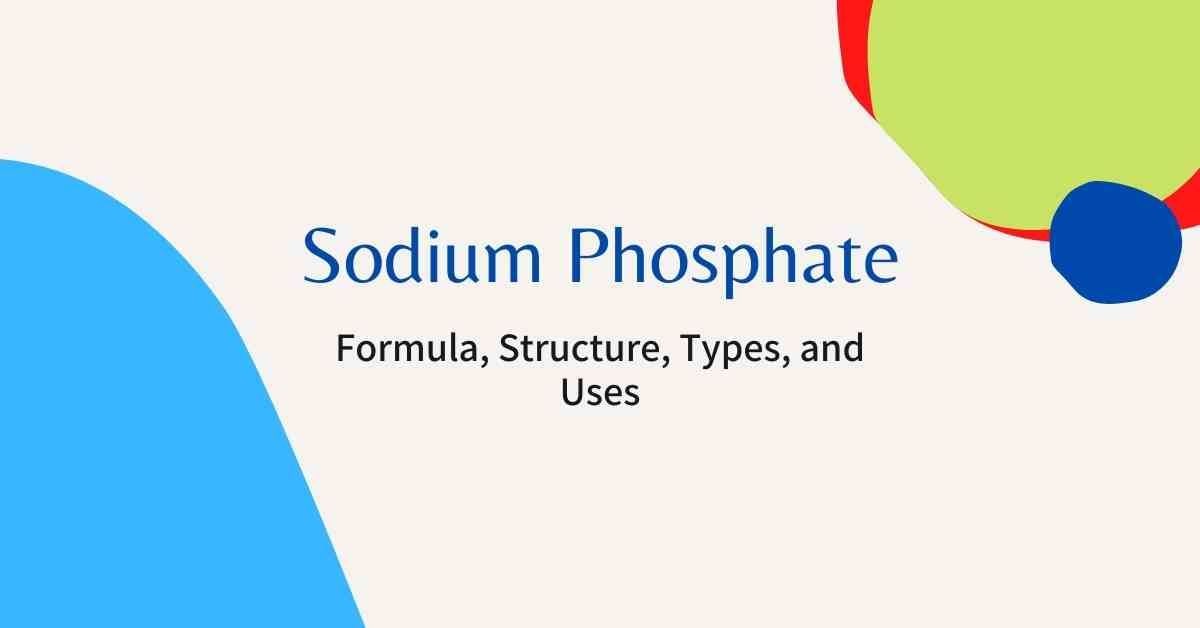
Contents
sodium phosphates IV
Sodium phosphate is administered intravenously and used in fluid formulas for total parenteral nutrition (TPN).
Phosphate is an essential electrolyte with vital biochemical functions in metabolic processes and enzyme reactions. It plays important roles in maintaining calcium levels, acid-base equilibrium, and hydrogen ion excretion in the kidneys. Sodium regulates blood volume and extracellular fluid levels.
Warnings
- Do not administer sodium phosphate IV to patients with:
- High phosphate levels (hyperphosphatemia)
- Low calcium levels (hypocalcemia)
- High sodium levels (hypernatremia)
- Congestive heart failure
- Severe kidney insufficiency
- Liver cirrhosis
- Fluid collection (edema) with sodium retention
QUESTION
What are the side effects of sodium phosphates IV?
Common side effects of sodium phosphates IV include:
- High levels of phosphates in the blood (hyperphosphatemia)
- Low potassium in the blood (hypokalemia)
- High or low sodium levels in the blood (hypernatremia or hyponatremia)
- Low calcium in the blood (hypocalcemia)
- Involuntary muscle contractions (tetany) from hypocalcemia
- Bloating
- Abdominal pain
- Nausea
- Vomiting
- Canker sores (aphthous stomatitis)
- Loss of appetite (anorexia)
- Fatigue
- Lethargy
- Irritability
- Confusion
- Stupor
- Coma
- Muscle twitching
- Muscle stiffness (spasticity)
- Tremor
- Impaired balance, coordination, and speech (ataxia)
- Seizure
- Irregular heart rhythm (cardiac arrhythmia)
- Hypersensitivity reactions
- Swelling under the skin and in the mucous tissue (angioedema)
- Severe allergic reaction (anaphylaxis)
- Acute kidney injury
- Kidney disease (acute phosphate nephropathy)
- Kidney insufficiency
- Destruction of tubules in the kidney (renal tubular necrosis)
- Calcium kidney stones (nephrolithiasis)
- Increase in blood urea nitrogen (BUN)
- Increase in serum creatinine
Call your doctor immediately if you experience any of the following symptoms or serious side effects while using this drug:
- Serious heart symptoms include fast or pounding heartbeats, fluttering in your chest, shortness of breath, and sudden dizziness;
- Severe headache, confusion, slurred speech, severe weakness, vomiting, loss of coordination, feeling unsteady;
- Severe nervous system reaction with very stiff muscles, high fever, sweating, confusion, fast or uneven heartbeats, tremors, and feeling like you might pass out; or
- Serious eye symptoms include blurred vision, tunnel vision, eye pain or swelling, or seeing halos around lights.
This is not a complete list of side effects or adverse reactions. Call your doctor for medical advice about serious side effects or adverse reactions. You may also report side effects or health problems to the FDA at 1-800-FDA-1088.
What are the dosages of sodium phosphates IV?
Contains a mixture of monobasic sodium phosphate and dibasic sodium phosphate
Intravenous solution:
- Phosphorus content: 93 mg (3 mM)/mL
- Sodium content: 92 mg (4 mEq)/mL
Hypophosphatemia
Adult:
- The dose and administration IV infusion rate for sodium phosphates depend on the individual needs of the patient
- Phosphorous serum level below 0.5 mg/dL: 0.5 mmol/kg IV infused over 4-6 hours
- Phosphorous serum level 0.5-1 mg/dL: 0.25 mmol/kg IV infused over 4-6 hours
- Prevention of hypophosphatemia (e.g., in TPN): 20-40 mmol/day IV admixed in TPN, with ongoing adjustment according to electrolyte levels
Pediatric:
- Caution should be exercised in premature neonates due to aluminum toxicity
- The dose and administration IV infusion rate for sodium phosphates depend on the individual needs of the patient
- Phosphorous serum level below 0.5 mg/dL: 0.5 mmol/kg IV infused over 4-6 hours
- Phosphorous serum level 0.5-1 mg/dL: 0.25 mmol/kg IV infused over 4-6 hours
- Prevention of hypophosphatemia (e.g., in TPN)
- Infants/children: 0.5-2 mmol/kg/day IV
- Children above 50 kg or adolescents: 10-40 mmol/day IV
- Dose adjustment according to electrolyte levels is ongoing
Administration
- Calculate the concomitant amount of sodium to be administered: Each 1 mmol of phosphate contains 1.3 mEq of sodium. Consider using potassium phosphates IV if sodium serum level is a concern (i.e., above 145 mEq/L)
- Administration of solutions containing sodium and phosphorous in patients with impaired renal function may result in hypernatremia or hyperphosphatemia
Overdose
- A sodium phosphates IV overdose can result in phosphate toxicity and electrolyte imbalance, with symptoms including involuntary muscle contractions (tetany), dehydration, low blood pressure (hypotension), rapid heart rate (tachycardia), high temperature (hyperpyrexia), cardiac arrest, and coma
- Overdose is treated with appropriate electrolyte administration and general symptomatic and supportive care as required
What drugs interact with sodium phosphates IV?
Inform your doctor of all medications you are currently taking, as they may interact with sodium phosphate IV. Do not begin, discontinue, or change medication dosage without your doctor’s recommendation.
- Sodium phosphate IV has severe interactions with the following drugs:
- lanthanum carbonate
- sevelamer
- baloxavir marboxil
- benazepril
- captopril
- erdafitinib
- calcium carbonate
- calcium citrate
- calcium gluconate
- dichlorphenamide
- furosemide
- magnesium citrate
- magnesium hydroxide
- pseudoephedrine
- voclosporin
The drug interactions listed above are not exhaustive. For more information, use the RxList Drug Interaction Checker.
Always inform your doctor, pharmacist, or healthcare provider about all medications you use, including dosage, and keep a list of this information. Consult your doctor or healthcare provider if you have any questions about the medication.
Pregnancy and breastfeeding
- There are no adequate and well-controlled studies on the safety of sodium phosphate IV use in pregnant women. Its effects on fetal development and reproduction capacity are unknown. Use during pregnancy only if clearly needed.
- Phosphorous and sodium are normal components of breastmilk, and it is unknown if supplementation increases their concentration. The decision to breastfeed during sodium phosphate IV therapy should consider the importance of maternal treatment, the benefits of breastfeeding, and the risks to the infant from drug exposure.
By clicking Submit, I agree to the MedicineNet’s Terms & Conditions & Privacy Policy and understand that I may opt out of MedicineNet’s subscriptions at any time.
Summary
Sodium phosphate intravenous (IV) is used to prevent and correct low serum phosphate levels (hypophosphatemia) in patients with restricted oral intake. It is also part of the fluid formulas for total parenteral nutrition (TPN). Common side effects include hyperphosphatemia, hypokalemia, hypernatremia or hyponatremia, hypocalcemia, tetany, bloating, abdominal pain, nausea, vomiting, canker sores, anorexia, fatigue, lethargy, irritability, confusion, stupor, coma, and more.
Sodium phosphate intravenous (IV) is used to prevent and correct low serum phosphate levels (hypophosphatemia) in patients with restricted oral intake. It is also part of the fluid formulas for total parenteral nutrition (TPN). Common side effects include hyperphosphatemia, hypokalemia, hypernatremia or hyponatremia, hypocalcemia, tetany, bloating, abdominal pain, nausea, vomiting, canker sores, anorexia, fatigue, lethargy, irritability, confusion, stupor, coma, and more.


